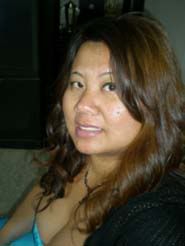Challenge of teaching border area students
Sunday, March 11, 2012

Use of mother tongue in early years is a success with Hmong kids in North, helps them learn Thai in later years
Have you ever considered how teachers and their students in remote areas interact while they are in class, especially those in mountainous areas where the mother-tongue is not Thai?
If you imagine a teacher talking before a blackboard and the students remaining silent, please forget it. You will no longer see such a typical style of teaching and learning - at least at Ban Rakpaendin School in Therng district in the northern province of Chiang Rai where 98 per
cent of more than 200 students are Hmong.
Clamorous voices of 19 kindergarten 2 students - scrambling to answer their teacher's questions and volunteering to read sentences written on the whiteboard in a Hmong dialect with Thai texts - could undoubtedly reflect the change in interaction in class between teachers and
students.
It was even more surprising that some students were brave enough to volunteer to read the sentences although they could not read them fluently, but had fun when they were trying to read.
Of course, doing nothing did not bring about this wonderful change to the Hmong students who face a tough barrier in the Thai language use in class with their Thai teachers.
Having been chosen to join the Mother Tongue Based Multilingual Education project among 11 schools in different parts of the country, these schools where most of the students speak their own mother-tongues have adjusted their teaching.
Local teaching assistants, who speak Thai and the dialects spoken by the students, have been hired to help teachers conduct classes mainly in their dialects instead of in Thai, for Kindergarten 1 and 2 and Prathom 1 (Grade 1) students.
Hmong teacher Patcharaporn Saeyang, 20, speaks to them mainly in their dialect, but the students start to study Thai through its alphabet.
She has them use Thai characters to spell words in the dialect they speak. "Using Thai characters helps me link them to learn Thai language more easily."
Wirat Chatchawanpreecha, 48, the Thai teacher in this class, said: "They are confident answering questions, respond to Patcharaporn, and have the courage to volunteer to join activities in class because Hmong is used as the communication language. They are not forced to speak Thai but I would use gestures and sing in Thai to teach some easy Thai words."
Sakol Intawong, director of the school, said to use gestures with explanations in Hmong and in Thai when teaching them the Thai language was a "total physical response" technique.
"Before doing this project only 60 per cent of Prathom 3 students could read Thai, but now 70-80 per cent can do so, while kindergarten students' development has obviously improved. The use of Hmong in class is reduced gradually when they reach higher levels.
It is replaced by Thai language. We will use a hundred per cent Thai language in class when they reach Prathom 4," he added.
Starting this teaching adjustment for Kindergarten 1 students in 2009, the school has so far provided the same teaching to Kindergarten 2 and Prathom 1. It will extend the teaching to Prathom 2 from next academic year.
In this project, students from the border provinces speak different dialects. At four pilot schools in Chiang Rai they speak a Hmong dialect, at a school in Chiang Mai a Karen dialect, at Kanchanaburi a Mon dialect, at a school in Surin they speak a Khmer dialect and at four other
schools in Yala, Pattani, Narathiwat and Satun speak a local Malay dialect.
"This project could help us prepare children living near the border of the country for the ASEAN Economic Community," Office of Basic Education Commission Deputy Secretary General Benjalug Namfa said.
She cited research that children who had already known two languages would be able to learn the third language more easily. She believed that to learn English as their third language would not be very difficult for them. They were born in multi-cultures - their own, and Thai culture at schools, so they were prepared to live among two cultures, which would help them when they had to adjust themselves to the outside world.
Also, their dialects were similar to Thailand's neighbouring countries' languages so they would understand Thai language clearly and could communicate with citizens from those countries, said Bussaba Prapasapong, senior educator at Bureau of Academic Affairs and Educational
Standards, who oversees this project in the North.
To sustain this helpful project, Bussaba said he would propose Obec adjust regulations to appoint more local teaching assistants who could communicate in both Thai and local dialects. They were really in need. Also, she wanted Obec to allocate more budget to pay them more.
Around Bt4,000 per month was too little.The Foundation for Applied Linguistics has provided them knowledge and training on how to teach using the mother-tongue based multilingual techniques and financial support to hire many of the assistants.
Read more...

